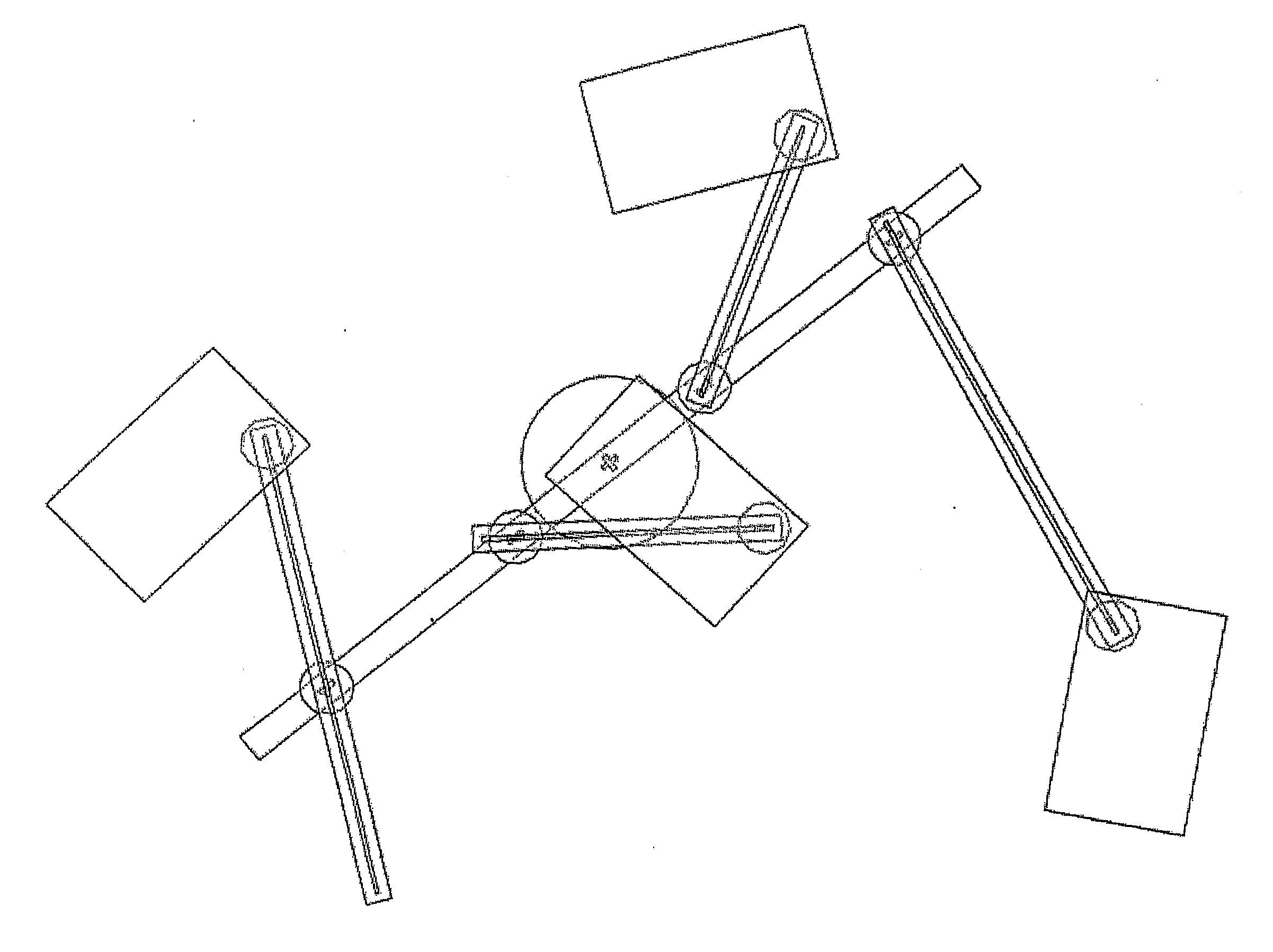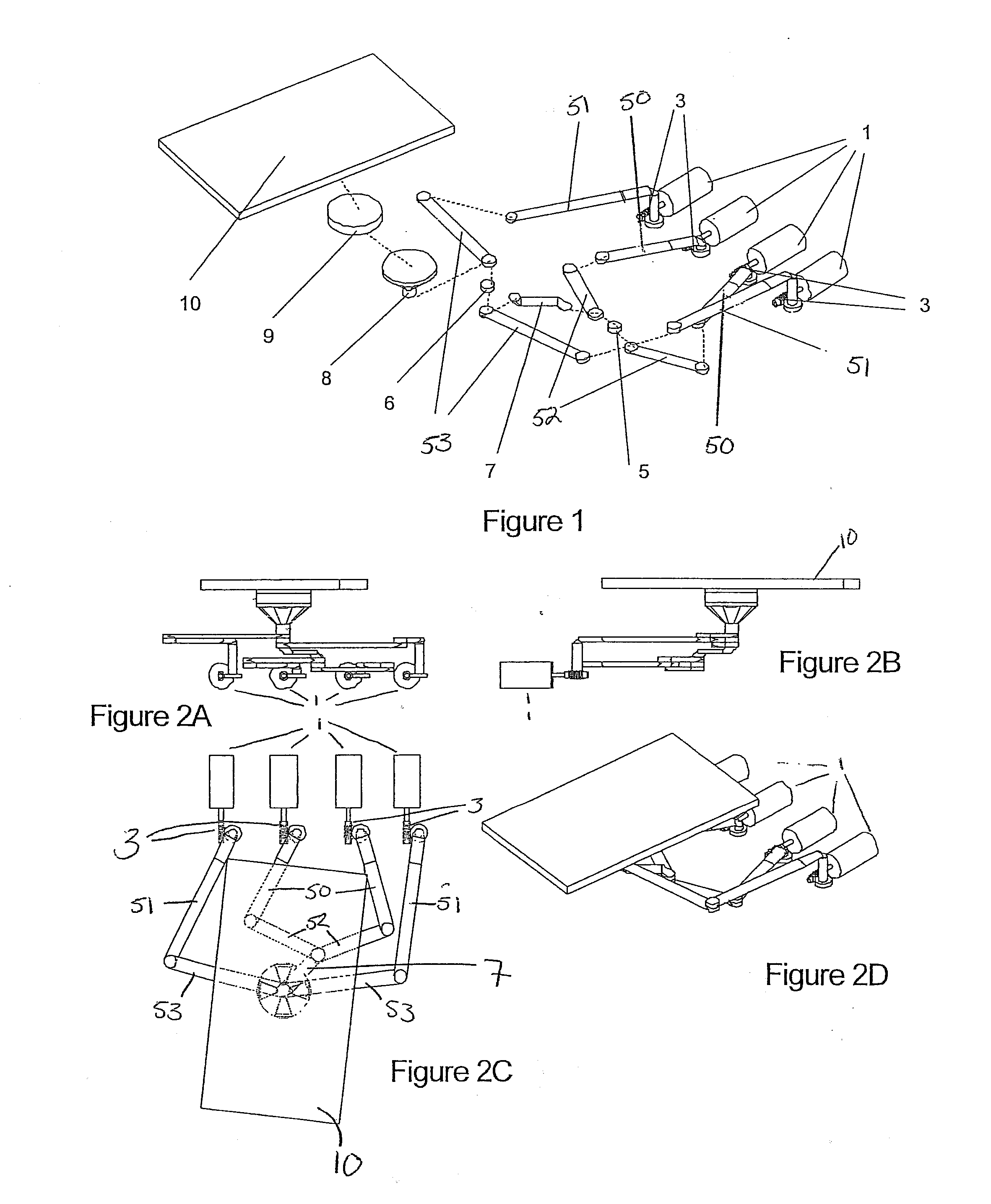Presentation system with movable display devices
a technology of movable display devices and display systems, applied in the direction of electrical apparatus casings/cabinets/drawers, image enhancement, identification means, etc., can solve the problems of reducing the ability of all but the largest of these electronic display systems to stand out, wow or entertain viewers, and consuming a lot of labor and material
- Summary
- Abstract
- Description
- Claims
- Application Information
AI Technical Summary
Benefits of technology
Problems solved by technology
Method used
Image
Examples
Embodiment Construction
[0071]The presentation system will be described with respect to the hardware of the system. The system will subsequently be described in combination with preferred software component for controlling the moving display devices.
[0072]Hardware
[0073]There are several ways to mount the display devices (preferably electronic display screens) to accomodate various degrees of mobility and a variety of different visual effects. Three preferred embodiments, including the compact planar manipulator, the 3 degree of freedom planar manipulator and the 6 degree of freedom planar manipulator will be described. Each of these embodiments include two or more display screens. It should be noted that although the use of a screen as a display device is the preferred embodiment, other possible display devices could include LCD, Plasma, OLED, and 3D lenticular screens or other technologies such as projectors, flexible display panels to created shaped surfaces (for example convex, concave, tubular, conical...
PUM
 Login to View More
Login to View More Abstract
Description
Claims
Application Information
 Login to View More
Login to View More - R&D
- Intellectual Property
- Life Sciences
- Materials
- Tech Scout
- Unparalleled Data Quality
- Higher Quality Content
- 60% Fewer Hallucinations
Browse by: Latest US Patents, China's latest patents, Technical Efficacy Thesaurus, Application Domain, Technology Topic, Popular Technical Reports.
© 2025 PatSnap. All rights reserved.Legal|Privacy policy|Modern Slavery Act Transparency Statement|Sitemap|About US| Contact US: help@patsnap.com



